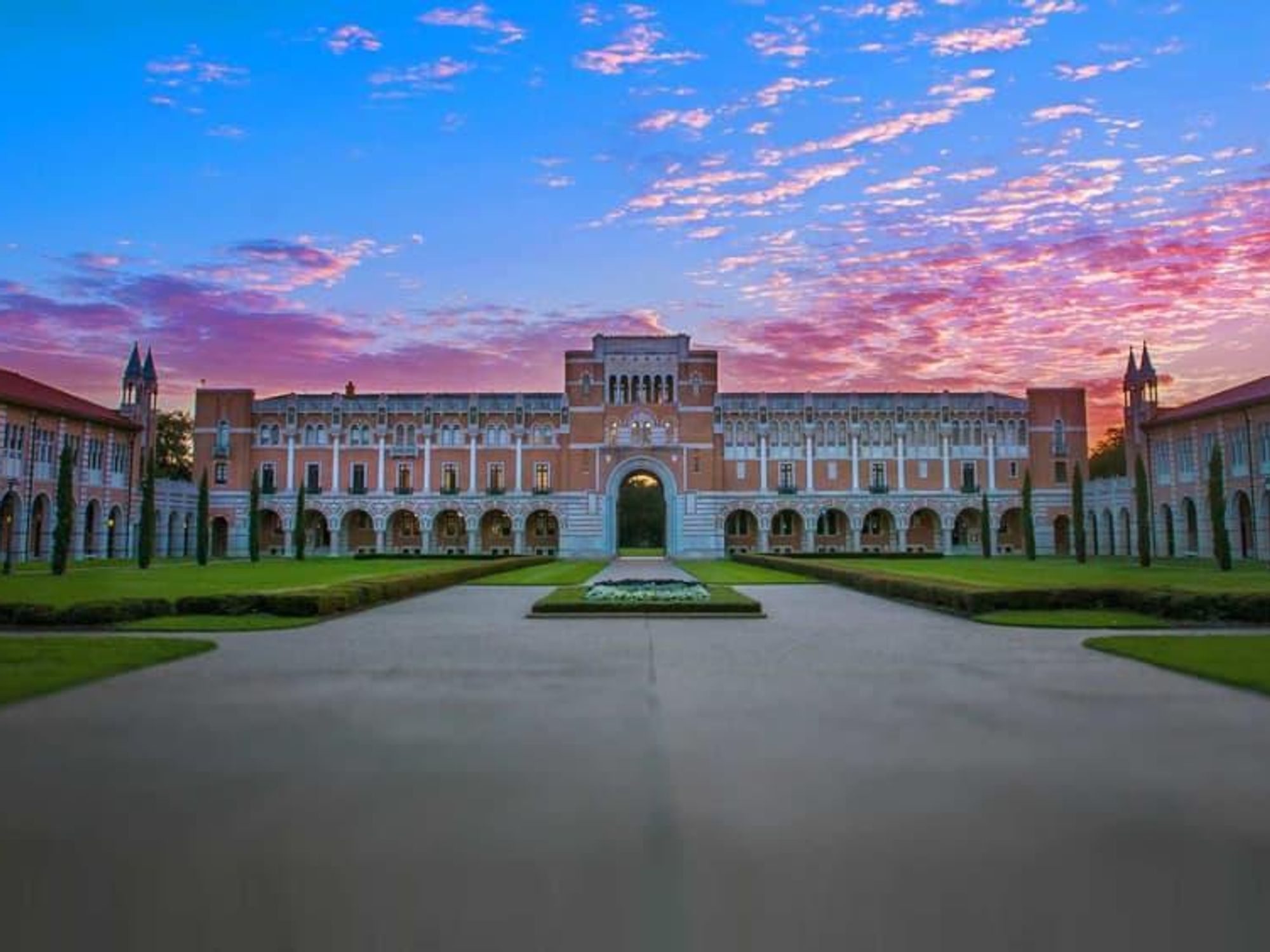rice rises again
Rice University rises with plan to significantly grow student body

Houston’s list-topping Ivy League of the South hub is set to see significant growth. Rice University’s board of trustees has approved a plan to enlarge its undergraduate student body by 20 percent, the school announced. That means some additional 4,800 students by the fall of 2025.
To accommodate this expansion, Rice will open its 12th residential college and expand the number of students living on campus by approximately one-third — to 3,525.
Rice calculates that its number of graduate students (3,500) is expected to grow, which will bring the total number of undergrad and grad students to about 9,000 by fall 2025. The undergraduate student-faculty ratio would remain roughly the same: about six faculty members for every undergraduate student, the school adds in a press release.
With the newly announced expansion in enrollment, Rice’s student body will have grown by around 80 percent over 20 years, per a press release.
This expansion isn’t unprecedented: The school notes a roughly 35-percent increase in undergraduate enrollment between fall 2005 and 2013, as well as enlargement in graduate programs.
Not surprisingly, demand for a Rice education is high, as the school reports that the number of students applying to has grown around 75 percent over the last four years. The growth was aided by the Rice Investment, a financial aid program launched in 2018 that significantly expanded support for domestic students from families with incomes up to $200,000.
For example, in 2004, Rice received about 11 applications for every entering student; by 2020, the ratio had grown to roughly 28 applicants for every student opening. Almost 30,000 students applied for fall 2021, marking an increase of 26 percent from the previous year.
Students can expect new construction on the campus, including a new engineering building, a new building for the visual and dramatic arts, an additional residential college, and an expanded student center. The familiar and beloved Rice Memorial Center (the ol’ RMC to generations of students) will be replaced; construction will begin in the first quarter of next year.
The school’s new three-story, 80,000-square-foot student center will incorporate all of the RMC’s current functions, a multicultural center, and gathering and event spaces. The facility will be designed by the international architecture firm Adjaye Associates, which spearheaded the Smithsonian National Museum of African American History and Culture.
Business-minded new students will also be able to take advantage of the university’s first undergraduate major in business, which will be offered beginning this fall. Current freshmen and incoming undergraduates are also eligible. Faculty and curriculum will come from the Rice’s top-ranked Jones Graduate School of Business.
New students can also take advantage of Rice’s newest initiatives, including, per the school:
The Welch Institute at Rice University
Thanks to a massive, $100 million commitment from the Robert E. Welch Foundation (the largest single gift in school history), the institute will accelerate the discovery, design, and manufacture of the next generation of basic materials.
Carbon Hub
The hub will direct $100 million of basic science and engineering on an array of technologies, several of which have already been proven in the lab, to create an energy future with zero carbon emissions.
The Rice University National Security Research Accelerator laboratories
A partnership with the Army Futures Command and the Army Research Laboratory represents a new model for collaborative research on critical technologies to enhance national security, a release notes.
“Rice’s extraordinary applicant pool has grown dramatically despite the challenges posed by the pandemic,” David Leebron, Rice president, noted in a statement. “With the previous expansion we greatly increased our national and international student applications, enrollment and visibility. We also dramatically increased diversity on our campus, and we were able to extend the benefits of a Rice education to many more students. As before, we must undertake this expansion carefully in order to assure that we retain the best aspects of Rice culture, student experience and sense of community.”
